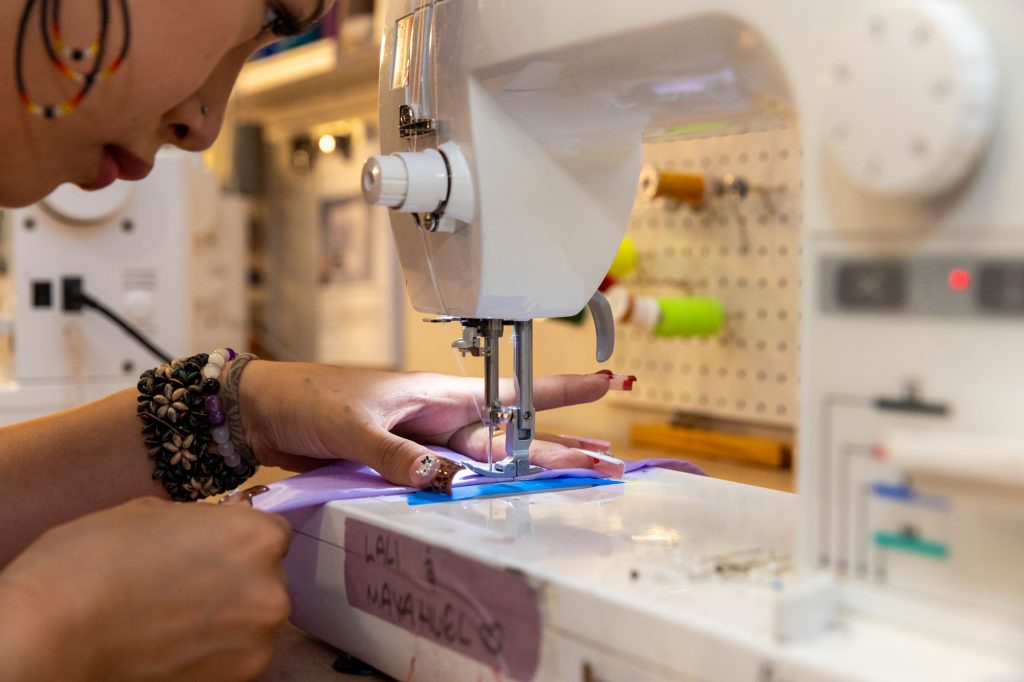The highlight of the project, then, has been the rich conversations between the students and chefs. “[The chefs are] showing childhood art that they did, where they like to shop, how they plate their food,” Verrières says. “[The students are] getting history lessons. Like, ‘Oh, this is a curry leaf.’ ‘This is what turmeric is.’ It’s so much more than just a lesson in fashion.”
The students have translated these food talks into their designs in a variety of ways. Sophomores Isadora Oznowicz and Sadie McMahon were taken with the pink napkins at Mama Oakland — and since the Italian restaurant is known for its wine selection, they decided to dip pieces of fabric into red wine. They came out just the right shade of pink.
Senior Annabella Ventresco and junior Mila Rukavina, meanwhile, visited pastry chefs Monique and Paul Feybesse at their new Oakland bakery, Tarts de Feybesse, for an impromptu lesson in how to pipe pastry cream — a technique they’ll use to incorporate pipeable whipped clay in their design. Their garment is a scalloped, tiered skirt topped with sugar on the edges — “very Marie Antoinette,” Verrières says.
“There are currently 17 layers in the skirt alone, and so that’s kind of in reference to the way they make the pastries,” Ventresco explains.
And yes, there will — hopefully — be braided plantain peels, inspired by the Colombian restaurant Parche, though ninth grader Luxmi Chakrabarti notes that the plantains are still undergoing some research and development. The idea, however, will be to turn the peels into little decorative elements that she’ll attach to the top of the dress.
For some of Verrières’ students, the collaborations mean diving headfirst into cultures completely different from their own. Before she paired up with Mela Bistro chef Adiam Tsegaye, 9th grader Beatrice Hunt had never eaten Ethiopian food.
Now, after multiple visits to the restaurant, she loves the cuisine and the way the tangy injera complements the colorful stews. Her design is a hoop skirt inspired by the fact that Ethiopian food is served in a circle — circular baskets, as well as the rounds of injera. The outside of the skirt is made entirely out of circular placemats, which she’s hand-dyed with beet juice and turmeric.
But perhaps the most rewarding part of the project is the way it has given many of the students an opportunity to connect with their own identity and heritage in a meaningful way.
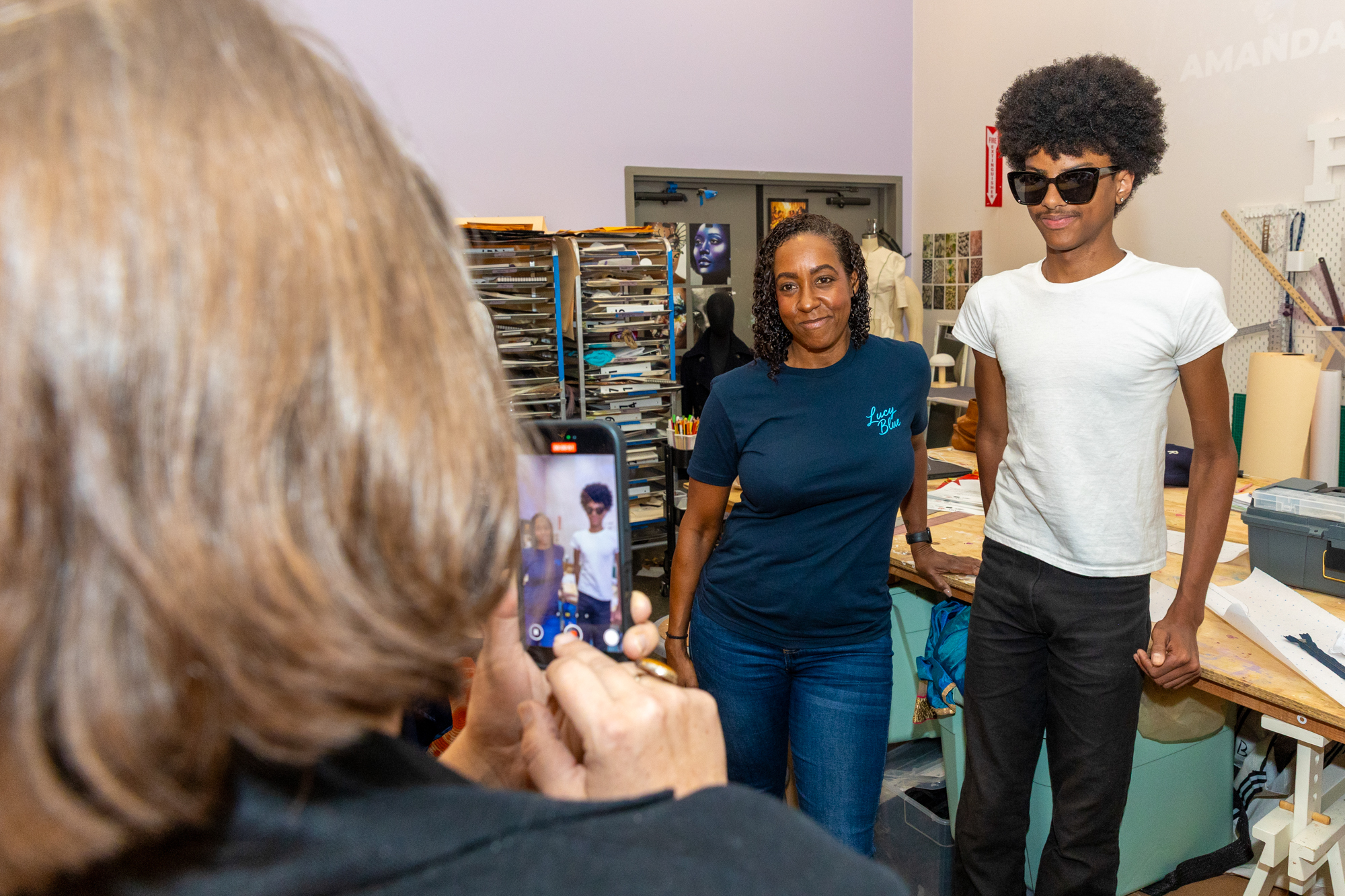
Olu Thomas, a senior, says he immediately gravitated toward Town Fare and its chef, Michele McQueen, who, like Thomas, is Black. He’s now translating her restaurant’s story into a sharp-looking suit made out of gray canvas that echoes Town Fare’s Brutalist concrete interior, plus a scarf inspired by its collard greens salad. Rachel Kiechel, also a senior, grew up around Dominican cuisine thanks to her aunt, so she was excited to work with Nelson German at alaMar — to chart, through her design, the chef’s journey from the Dominican Republic to New York to the Bay.
Kylie Didrickson, a ninth grader and fourth-year OSA fashion design student, partnered with Crystal Wahpepah after learning that the chef’s Fruitvale business, Wahpepah’s Kitchen, was the first Indigenous restaurant to open in Oakland. Didrickson is part Indigenous herself — her father, who is Alaskan Native, went to the same after-school program at Oakland’s Intertribal Friendship House that Wahpepah attended while growing up.
When Didrickson saw the all-Native menu at Wahpepah’s Kitchen, she says, “It felt so bold, and almost like it was meant for me in a way.”
During their first meeting, the chef told Didrickson stories about the time she’d traveled to Alaska to eat whale meat with the Native people there. She suggested ingredients that Didrickson might incorporate into the garment: berries, dried beans and mini violas, a purple edible flower that Wahpepah sources from a Native-owned farm in Oregon. A member of the Kickapoo Tribe of Oklahoma, Wahpepah says she mostly encouraged Didrickson to emphasize her cuisine’s vibrant colors.
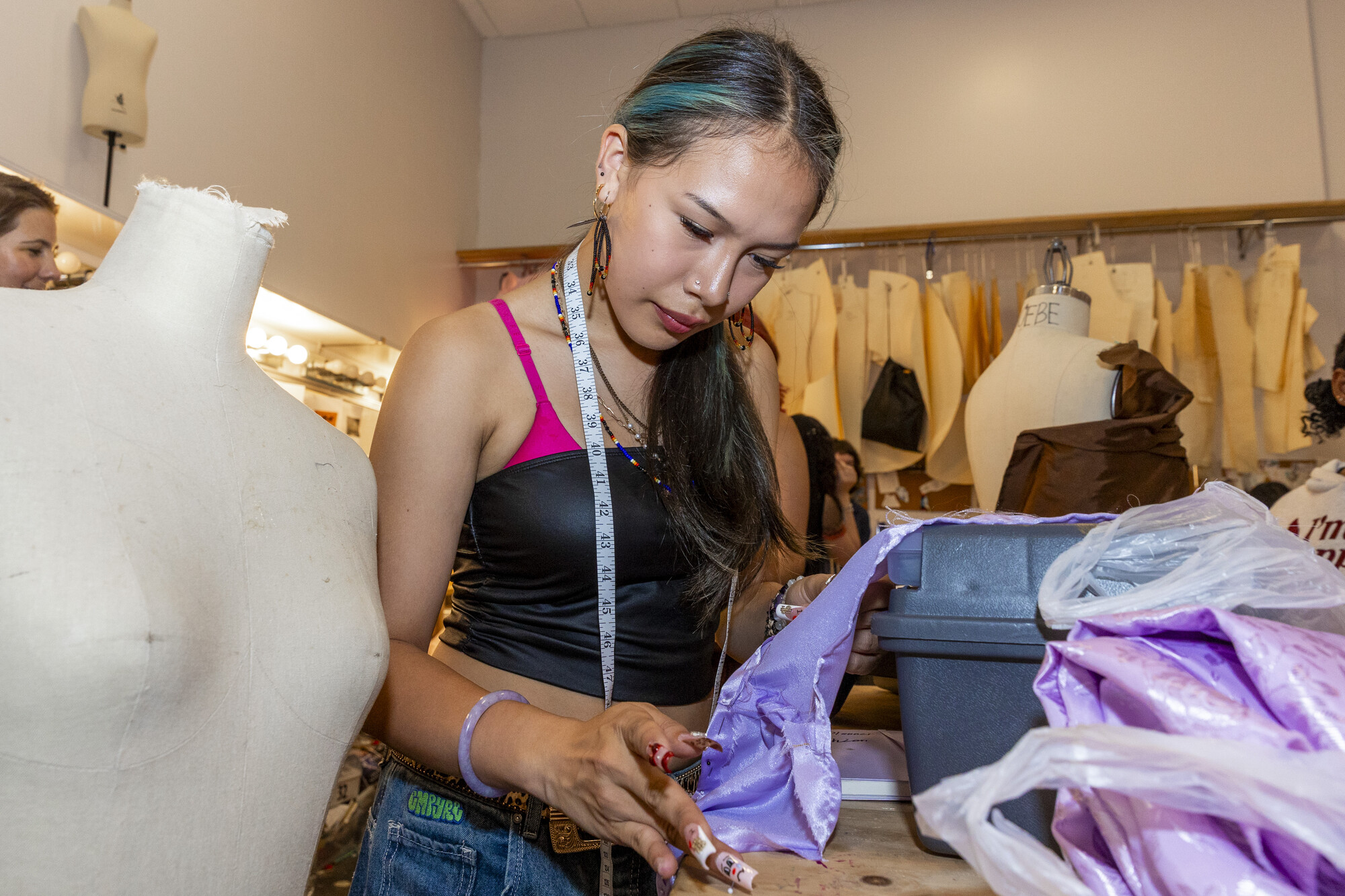
Meanwhile, when Didrickson looked around the restaurant, she kept seeing things that reminded her of the Native women in her family. The mural of a Kickapoo woman wearing a traditional, bright purple dress became the inspiration for the top Didrickson is designing. But it also made her think about the photo of her grandmother she keeps on her refrigerator. “I never got to meet her, but I always thought she was so pretty,” she says. Why not incorporate the long red dress and orange ribbons that Didrickson’s grandma wears in the photo into her design as well?
Didrickson has been passionate about fashion and makeup for as long as she can remember, but because she didn’t know of any Native designers, she never really thought about expressing that part of her identity in her art.
Now, she says, “I feel like whatever I do in life, I want to incorporate some of myself in it. I want to add a part of myself into every piece I make.”
A two-way collaboration
As much as the students have found inspiration from the chefs, the effect has been reciprocal. Paul Iglesias and Sophia Akbar, the husband-and-wife team behind Parche and Jaji, have even found themselves tweaking their menu for the Cuisine and Couture gala in response to their students’ evolving designs.
Iglesias, for instance, saw that his student collaborator, Chakrabarti, was inspired to incorporate the look of a sorbet she’d eaten at Parche into the design of her colorful blue and red dress. Now he’s thinking about perhaps adding a savory sorbet element to the dish he’ll be serving. Akbar, whose contemporary Afghan restaurant Jaji opened earlier this year, decided to adjust her dish after seeing how much dried fruit her student had incorporated into her piece.
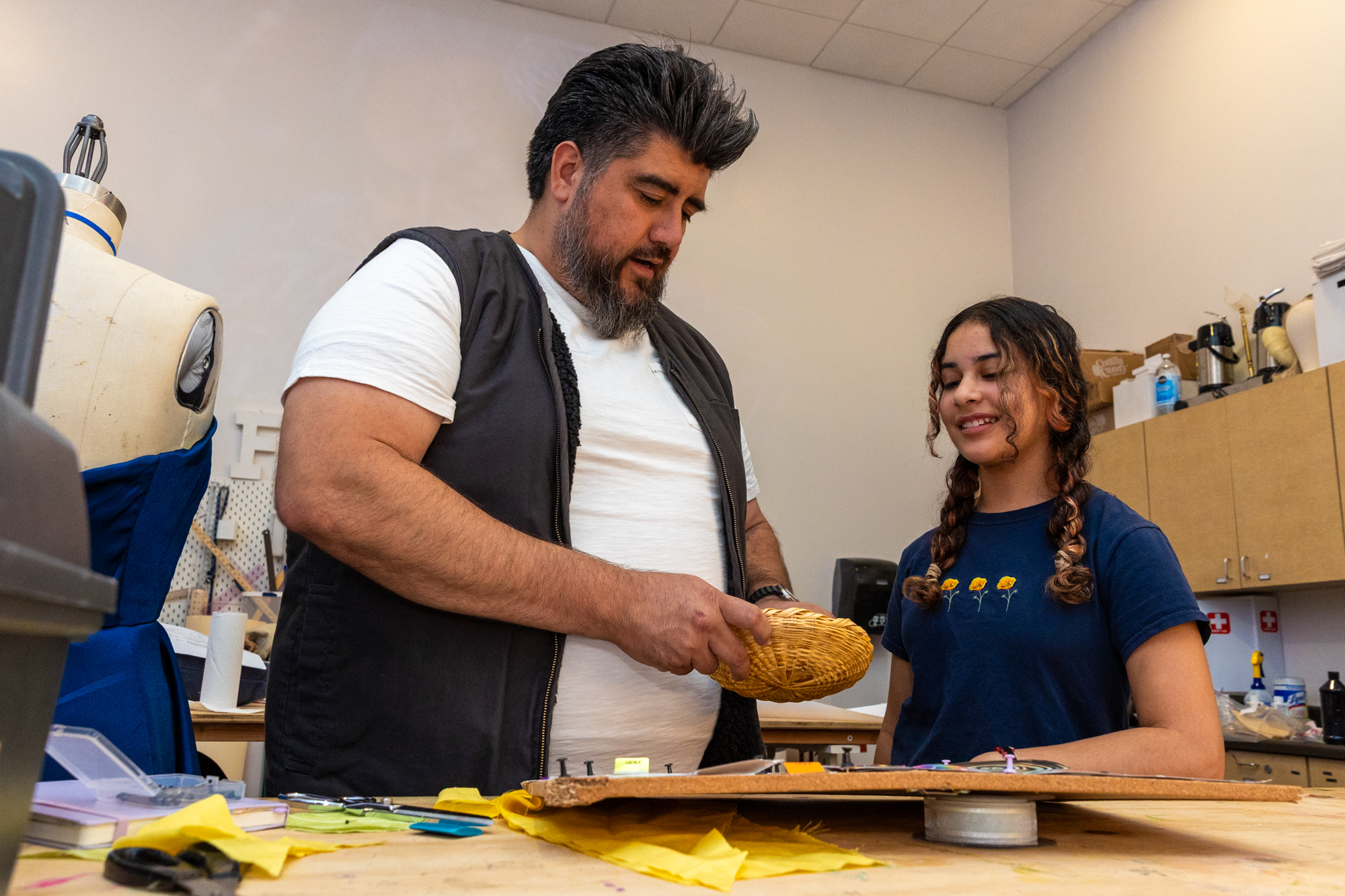
“It’s art at its purest,” Iglesias says of the way designers and chefs, students and mentors, are coming together to create something magical that will exist only for that moment — one bite, one stroll down the runway.
Or, as Akbar puts it, “It’s a lot more of an interesting pairing than talking to your typical winemaker.”
And of course, as an event put on by the tourism bureau, Cuisine and Couture is meant to be a platform to show Oakland in the best possible light, at a time when news headlines about the city are often bleak. alaMar’s German says he has been so impressed by the wealth of creative, talented artists at OSA. For him, the food and fashion event will be proof that “Oakland is not hopeless.”
“There’s so much still here that’s positive and beautiful,” he says. “And now it’s our time to really shine.”
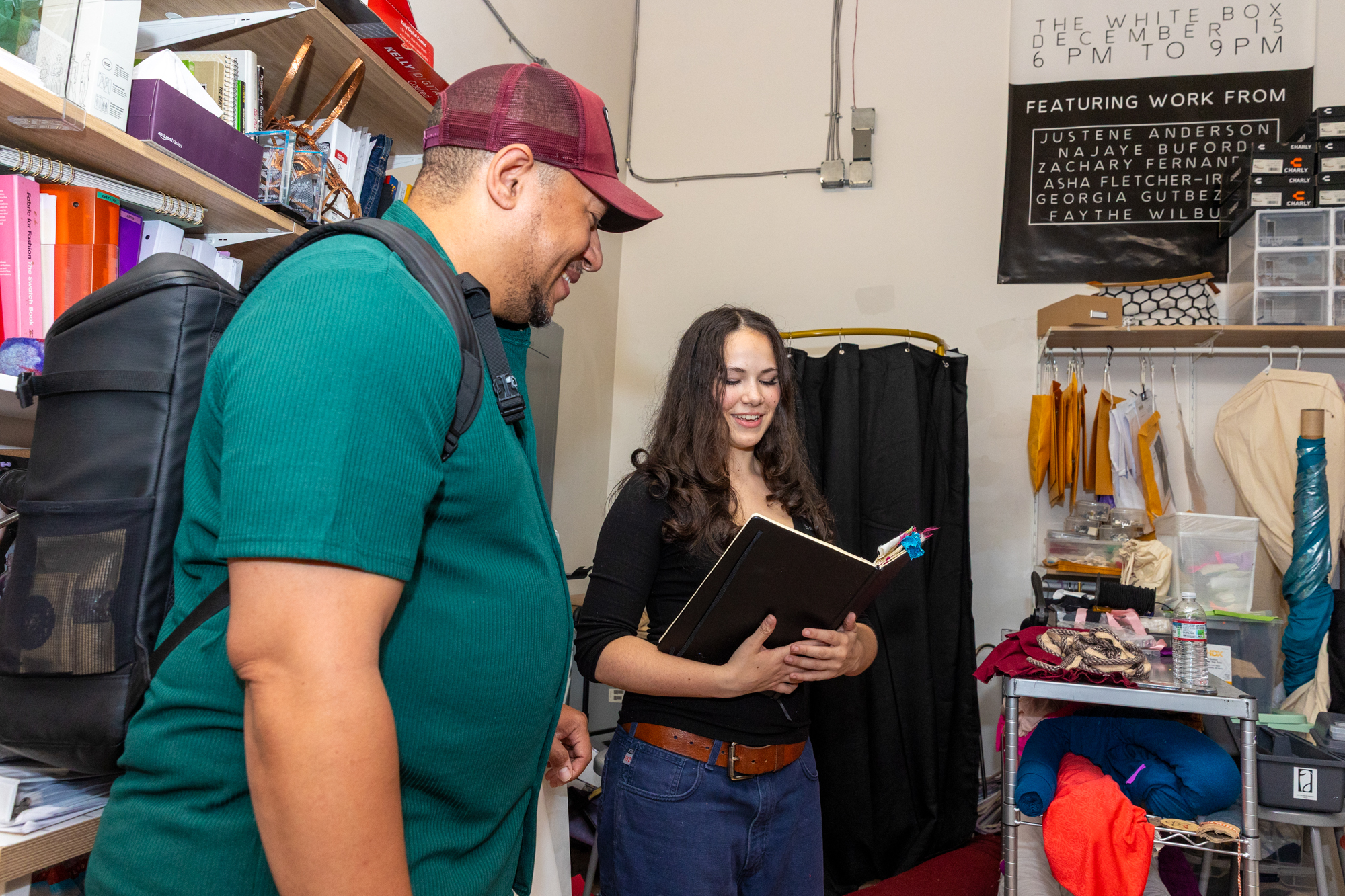
It’s the project’s richly textured, multidimensional aspect that makes the project feel especially Oakland to Verrières — the way that so many different neighborhoods and food genres are represented, and how her students have peeled back so many layers of culture and history and cuisine. “You couldn’t do this in San Francisco,” she says, laughing.
In just a couple of weeks, Verrières hopes everyone in Oakland who loves food, culture and creativity will come out to see what her students have made with their own two hands. The gasps of delight when a model walks out wearing a dress made of corn husks, or sugar, or spray-painted pasta. The poignant moment when each pair of chefs and student designers walks down the makeshift runway together, side by side. The way, perhaps, the whole Town will rise to its feet to give them their flowers.
Cuisine and Couture will take place on Sunday, Oct. 12, from 11:30 a.m.–1:30 p.m., at the Oakland Museum of California (1000 Oak St., Oakland). Tickets ($25–$75) are available online until sold out.

